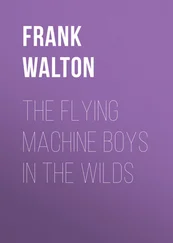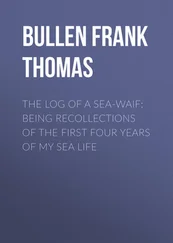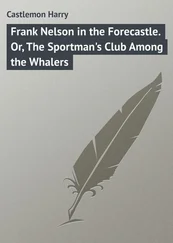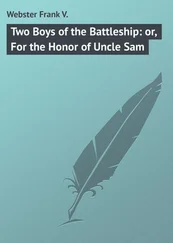Johanson glanced back at the tank and thought of the dead worms. 'It's an excellent idea,' he said.
AFTER A WHILE JOHANSON went back to the hotel to get changed. He tried to reach Lund, but she wasn't picking up. He imagined her lying in Sverdrup's arms and hung up.
Bohrmann had invited him to dinner that evening in one of Kiel's best restaurants. He went into the bathroom and inspected himself in the mirror. His beard needed trimming, he thought. It was at least two millimetres too long. Everything else was just right, though. His once-brown hair was thick and shiny, despite the strands of grey, and his eyes still twinkled beneath heavy brows. At times he found it hard to resist his own charisma. One of his female students had told him that he looked like the actor Maximilian Schell. Johanson had felt flattered – until he found out Schell was over seventy.
He rummaged through his suitcase, pulled out a zip-neck sweater and put it on, then struggled to force his suit jacket over the top. He wrapped a scarf round his neck. He didn't look well dressed, but that was how he liked it. He cultivated a scruffy look. It took him longer to achieve his dishevelled hairstyle than most people would spend on a respectable coiffure.
He flashed himself a smile in the mirror, left the hotel, and took a taxi to the restaurant.
Bohrmann was waiting for him. They had a few glasses of wine with their dinner, but eventually the conversation drifted back to the ocean. Over desert Bohrmann asked casually, 'How much do you know about Statoil's plans?'
'Only the basic details,' said Johanson. 'I'm not especially well informed about oil.'
'What are they planning? It can't be a platform – it's too far out to sea.'
'It's not a platform.'
'I don't want to pressure you and I've no idea how confidential these things are…'
'I shouldn't worry about that. I've been told, it can't be very secret.'
Bohrmann laughed. 'So, what are they building out there?'
'They've got plans for a subsea plant. A fully automated one.'
'Like SUBSIS?'
'What's that?'
'Subsea Separation and Injection System – a unit off the coast of Norway in the Troll field. It's been active for a number of years now.'
'Never heard of it.'
'You should ask the guys who sent you here. SUBSIS is a processing plant that operates three hundred and fifty metres down. It separates the water from the oil and gas at seabed level. In conventional plants, the process takes place on the platforms and the water is discharged into the sea.'
'Oh, I remember!' Lund had said something about it. 'The water makes fish infertile.'
'SUBSIS can get round that. The water is injected back into the reservoir, pushing the oil upwards, so more oil pumps out. In the meantime, the water is removed, re-injected, and so it goes on. The oil and gas are carried through pipelines to the coast. It's pretty neat, as far as it goes.'
'But?'
'I'm not sure there is a but. SUBSIS is supposed to work perfectly in depths of up to fifteen hundred metres. Its manufacturer thinks it can do two thousand, and the oil companies are aiming for five thousand.'
'Is that feasible?'
'In the not too distant future, yes. Anything that works on a small scale will probably work on a larger one, and the advantages are obvious. It won't be long before remote-controlled plants replace all of the platforms.'
'You don't sound enthusiastic,' said Johanson.
There was a pause. Bohrmann seemed unsure how to respond. 'What bothers me isn't the subsea plant as such. It's the naivety of it all.'
'It's a remote-controlled unit?'
'Fully automated. It's operated from the shore.'
'Which means repairs and maintenance work are carried out by robots.'
Bohrmann nodded.
'I see,' said Johanson.
'There are pros and cons,' said Bohrmann. 'It's always risky when you enter unknown territory. And, let's face it, the slopes are certainly that so it makes sense to automate the system. There's nothing wrong with sending down a robot to do a bit of monitoring or to take a few samples. But a subsea station is a different proposition. Suppose oil spurts out of a well five thousand metres down. How are you going to fix it? You don't know the terrain. All you've got is piles of data. We're as good as blind down there. OK, we can use satellites, digital sonar and seismic profiling to create a map of seabed morphology that's accurate to within half a metre. OK, we've got bottom-simulating reflectors to detect oil and gas deposits, so we can tell where we should drill, where we'll find oil, where the hydrates are stored, and where best to avoid… But as for what's down there, no one really knows.'
'That's my refrain,' murmured Johanson.
'Don't get me wrong, I'm not against fossil fuels per se , but I object to making the same mistake twice. When the oil industry took off, we erected our junk in the sea, without anyone thinking about how we could dispose of it. We emptied wastewater and chemicals into rivers and seas, as though they'd simply disperse. Radioactive material was dumped in the oceans. Natural resources and life-forms were exploited and destroyed. No one stopped to consider how complex the connections might be.'
'But subsea plants are here to stay?'
'Almost certainly. They're more economic, and they can tap oil reserves that humans can't reach. After that, the stampede will start for methane. It burns more cleanly than fossil fuels and it will slow down the greenhouse effect. All the arguments in favour are perfectly valid – providing everything goes to plan. People in these companies often confuse what should happen in an ideal scenario with what could happen in reality. It makes their lives easier. Whenever they're presented with a range of possible outcomes, they pick the most favourable so they can start work straight away – even if they know nothing about the world they're intruding on.'
'But how will they exploit the methane?' asked Johanson. 'Won't the hydrates dissociate on the way to the surface?'
'That's where remote-controlled processors enter the equation. If you get the hydrates to dissociate while they're down there, by heating them, for example, all you've got to do is trap the gas and channel it to the surface. It sounds great, but who's to say that an operation like that won't start a chain reaction and trigger a heatwave like the one in the Paleocene?'
'Do you think that's possible?'
Bohrmann spread his hands. 'Every time we tamper with our environment without knowing what we're doing, we're dicing with death. But it's started already. The gas hydrate programmes in India, Japan and China are already quite advanced.' He gave a bleak smile. 'But they don't know what's down there either.'
'Worms,' murmured Johanson. He thought of the video images that Victor had taken of the seething mass on the seabed. And of the ominous creature that had disappeared into the dark.
Worms. Monsters. Methane. Natural disasters.
It was time for a drink.
Vancouver Island and Clayoquot Sound, Canada
The sight of it made Anawak angry. From head to fluke it measured over ten metres, an enormous male orca, one of the biggest transients he had ever seen. Its half-open jaws revealed tightly packed rows of glistening conical teeth. The whale was past its prime, but still immensely powerful. It wasn't until Anawak examined it more closely that he noticed the dull, worn patches that flecked its shiny black skin. One of its eyes was closed and the other was hidden from view.
Anawak had recognised it straight away. On the database it was listed as J-19, but its distinctive dorsal fin, curved in the shape of a scimitar, had earned it its nickname: Genghis. He walked to the other side of the body and spotted John Ford, director of Vancouver Aquarium's marine-mammal research programme, talking to Sue Oliviera, head of the lab in Nanaimo, and another man. They were gathered under the line of trees that fringed the beach. Ford beckoned Anawak over. 'Dr Ray Fenwick from the Canadian Institute of Ocean Sciences and Fisheries,' he said.
Читать дальше












